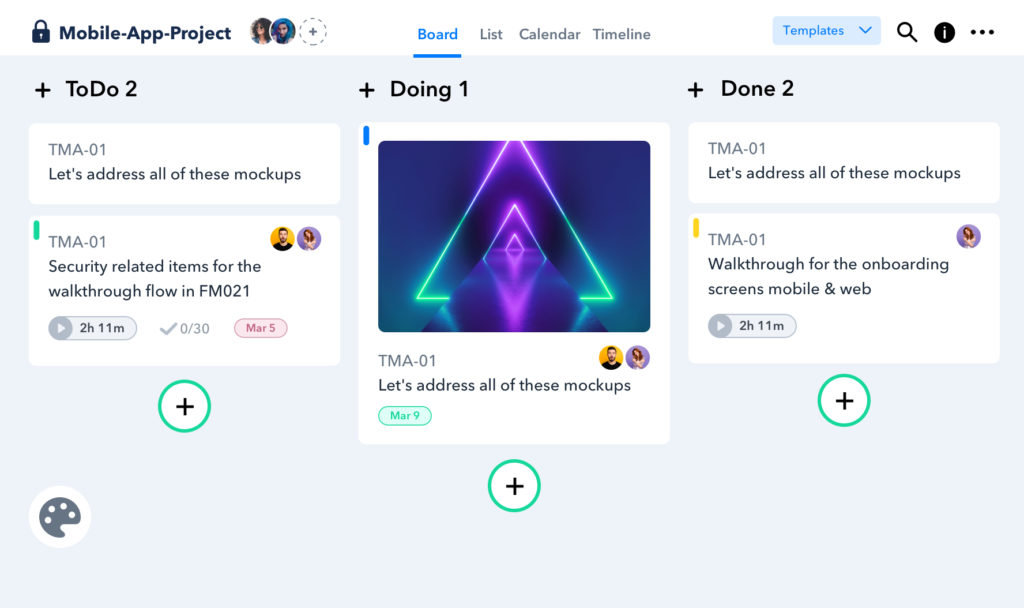Nobody expects it to happen but nobody is immune to it. Scope creep is one of those insidious things that can stall projects and ruin the collective productivity of an organization. That’s why how to avoid scope creep in project management should be a top concern for businesses.
Thousands of teams across sectors would be experiencing scope creep in their projects right now. Employees would be languishing in projects with far too many objectives and laterally added demands and dwindling resources and morale. No wonder then, for organizations, scope creep has become a dreaded word.
What’s worse, in several instances, teams may not realize that their project has been a victim of scope creep. But just because it’s ubiquitous doesn’t mean it’s unavoidable. With the right tools and processes in place, any organization can minimize or even avoid scope creep in their projects.
What is scope creep in project management?
 Scope creep is what happens when the scope, goal, vision, features, functionalities, or deliverables of a project expands from what was initially decided without any changes in either budget or time. It can happen to any project whether intentionally or unintentionally.
Scope creep is what happens when the scope, goal, vision, features, functionalities, or deliverables of a project expands from what was initially decided without any changes in either budget or time. It can happen to any project whether intentionally or unintentionally.
When scope creep happens to a project, everything from the definition of the project to its deliverables gets muddled. Eventually, it can cause the project to fail by exceeding the budget, overshooting the deadline, or delivering wrong outcomes.
What causes scope creep in project management?
To learn how to avoid scope creep, it’s important to understand how it happens in the first place. These are some common causes that lead to scope creep in management:
- Unclear goals: Clarity in objectives makes it easier to allocate resources and decide on timeframes. When the goals are unclear, it can lead to confusion and misunderstanding between team members.
- Project complexity: If the initial scope of work doesn’t accurately reflect the complexity of the project, subsequent iterations and expansions will be unavoidable because resource needs and allocation could be mismatched.
- Poor leadership: Scope creep in project management is also due to inefficient managers with a lack of experience or personal motives. Some leaders may not have the expertise in that specific domain, which could expand the project goals later.
- Lack of change management: If the initial scope of work doesn’t state how changes will be managed, there will be problems. Without a protocol, team members might make decisions without internal reviews.
- Overpromising on deliverables: When there is no clarity on objectives and if the team hasn’t conducted a thorough risk analysis, project teams can end up overpromising on the objectives.
- Lack of proper communication: In the absence of a plan, there will be a miscommunication about the objectives and deliverables. This can also happen if the team hasn’t met the client or customer to understand their specific requirements.
- External factors: These include changes in market conditions, technology trends, customer requirements, leadership at the customer or client’s side, or shifting priorities. This is another reason why risk management is crucial in projects.
6 ways to avoid scope creep in project management
To ensure that your team, organization, and client relationships don’t suffer, you can use these six tactics to avoid scope creep in project management.
Ensure your team is clear on the project and its expectations
 Before starting the project, go through project brief, client briefs, or creative briefs with the team members. Make sure that everyone has had the time to study and review them. If there are any queries about the scope of the project, this is the opportunity to clarify them.
Before starting the project, go through project brief, client briefs, or creative briefs with the team members. Make sure that everyone has had the time to study and review them. If there are any queries about the scope of the project, this is the opportunity to clarify them.
If the project is for a client, it’s an excellent idea to include them in the briefing process. They can be part of the call for greater transparency. Once the deliverables are noted down, the team leader can get the client to vet them so that everyone is on the same page.
Plan your project as much as possible
Your project’s success or failure will depend on its planning. While everyone might have clarity on the larger objectives, stakeholders usually don’t pay enough attention to the little details. Being as specific as possible will help you avoid scope creep in project management.
All aspects of the plan, from the deliverables to the resources to the timeframe, should be documented. You can also discuss it with both the team members and the client. This might reveal aspects that you may not have considered. It’s also helpful to talk to others in the system who may have done similar projects.
Have a tracking and task management tool in place
 Heycollab project management tool
Heycollab project management tool
For everyone involved, it’s important to have constant visibility into the project. This will alert the project leaders if there is an imminent chance of a deliverable being added or a goal being tweaked. To know this, you need a user-friendly task management system that will help track your time and provide real-time insights.
Now you will know your progress and whether the team is meeting the stated objectives in the plan. If you notice that any of the team members are deviating from the objective, you can immediately intervene. Finding it later would be detrimental to the project.
Incorporate status updates with clear lines of sight into the project
Status updates are real-time markers that will reveal not just the overall progress in any project but also whether the members are doing what they are supposed to. The conventional solution for reporting status updates is through emails but as everyone knows, that comes with a significant time lag.
With the right project management tool, you can encourage seamless communication and messaging. Individuals can also comment on tasks when they are completed and tag other members when needed. It will also help if you schedule regular meetings to have more in-depth reviews of status reports.
Have SOPs for your team to follow
Scope creep usually happens when there is no protocol for people to follow. While they would have been comfortable in their individual domains, when working together on a project, processes can become fuzzy. This problem wouldn’t be visible since the individuals would be still working on them. The fact they have missed the deadline or consumed too many resources would only be clearer in hindsight.
Every project plan needs to have an SOP informing people of how to perform specific tasks. This is crucial when working on new platforms or when individuals are collaborating for the first time. If the task is more complex or time-consuming, there should be a specific SOP for the concerned individuals.
Only schedule meetings when necessary and involve key people
 Scope creep is also an offshoot of unnecessary meetings with unclear objectives and results. Meetings used to be vital to discuss the scope of work and resources required and to inform everyone of the project status. But when most of these can be automated and conveyed in real-time with helpful insights, meetings become ineffective.
Scope creep is also an offshoot of unnecessary meetings with unclear objectives and results. Meetings used to be vital to discuss the scope of work and resources required and to inform everyone of the project status. But when most of these can be automated and conveyed in real-time with helpful insights, meetings become ineffective.
Meetings are needed to discuss updates. But you should avoid holding unnecessary meetings that will extend the scope of the project. Remember that preparing for the meeting and discussing its results also take up time. Importantly, project leaders should only invite those whose participation is vital for the topic being discussed. When individuals without any stake in a particular aspect are present in a meeting, pointless observations and discussions can ensue, which can lead to scope creep.
In short
Managing scope creep and sticking to your original plan isn’t always possible but with these tips in place, you can manage expectations and still remain productive, agile, and innovative. Tools like HeyCollab can help you create and assign tasks while also maintaining seamless and efficient communication with your team, all in one convenient location.

